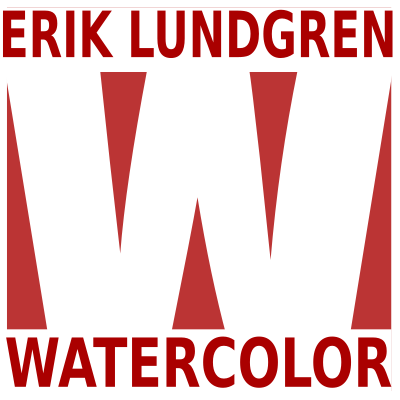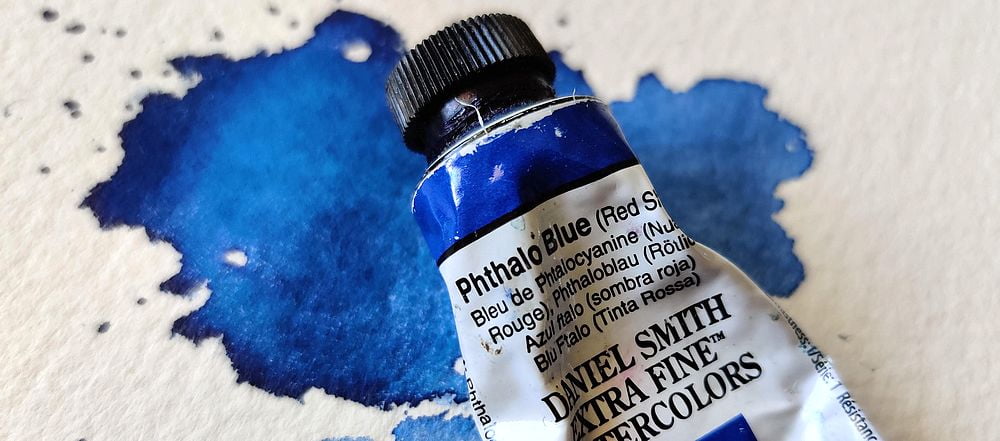Cobalt Blue (PB28)

Long before cobalt blue there was a pigment called smalt, cobalt glass ground to a fine powder. Smalt dates back to 2000 BC. It was used mainly for ceramics in ancient Egypt and in China, which imported it from Persia. In Europe, they started importing smalt in the 16th century, the pigment was mainly used for oil paint. Smalt was an important pigment in European painting until the early 1800s when chemists succeeded in producing cobalt blue, a synthetic pigment, by calcining cobalt and aluminum oxides.
Cobalt blue is a natural light pigment that is a little warmer than primary blue. It is a bit milky whitish and not completely transparent. It is an asset in every palette, at least for those who want to mix colors themselves, it has very good mixing properties. Cobalt blue mixes well in both the green and violet direction, it turns nice gray with most orange-brown colors. Of course, the mixtures are affected by the white milkiness of the paint, but all mixtures are affected equally, so there is no problem. However, one must tolerate that the light tone of the paint does not make it possible to mix dark colors.
Cobalt blue is one of my favorite colors, it is a color that I must have in my palette. It granulates beautifully and is good to mix with, that it is only semi-transparent you have to put up with.

Information
Color index name: PB28
Lightfastness: Excellent
Transparency: semi-transparent
Staining: Just a little
Granules: Yes
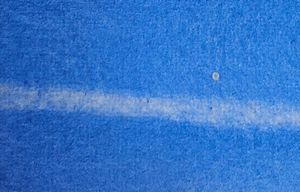

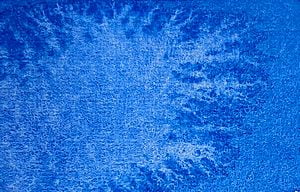
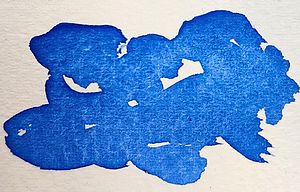
There is quite a lot of cheating among the manufacturers of artist paints. Cobalt blue is an expensive pigment (one of the most expensive of the common pigments) so manufacturers are tempted to counterfeit cobalt blue. A common way to do this is to use French ultramarine mixed with white paint. Sometimes phthalo blue is included, sometimes the manufacturers use a relative of cobalt blue called Cerulean Blue. Before you buy a cobalt blue color check so it really is cobalt blue and not a counterfeit, the pigment should be PB28.
Here are some manufacturers who call a color that is not cobalt blue for cobalt blue
- SCHMINCKE HORADAM: COBALT BLUE TONE PW4 Zinc white) PB29 (French Ultramarine)
- SHINHAN PASS: COBALT BLUE HUE PB15:3 Phthalo Blue), PB29 (French Ultramarine)
- SHINHAN PREMIUM COBALT BLUE HUE PB29 (French Ultramarine)
- WINSOR & NEWTON COTMAN COBALT BLUE HUE PB29 French Ultramarine), PW5 (Lithopone)
- HOLBEIN ARTISTS’: COBALT BLUE HUE PB29 (French Ultramarine), PB15 (Phthalo Blue)
- DALER ROWNEY AQUAFINE COBALT BLUE HUE PB29 (French Ultramarine) PW6 (Titanium White)
- MAIMERIBLU: COBALT BLUE PB36 (Cerulean Blue)
- MAIMERIBLU: COBALT GREEN BLUE PB36 (Cerulean Blue)
